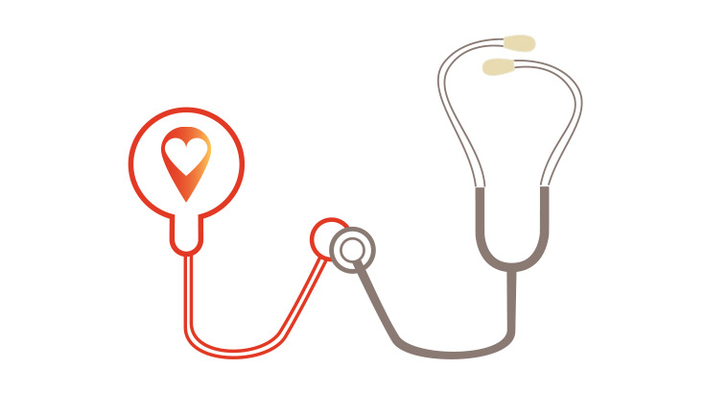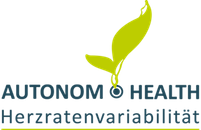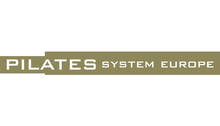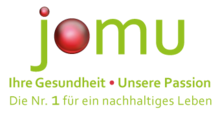
HRV im Spiegel der Wissenschaft
Die Bestimmung der Herzratenvariabilität hat sich während der letzten 20 Jahre im klinischen Einsatz (z. B. bei der Risikobestimmung des plötzlichen Herztodes oder der Diagnose diabetischer, neuropathischer Prozesse) als zuverlässiges, nicht invasives diagnostisches Verfahren fest etabliert.
Auch in den Sportwissenschaften, vor allem im Ausdauersport, nutzt man die Parameter der Herzratenvariabilität zur optimalen Trainingssteuerung von Belastungs- und Erholungsphasen.
Bereits 1965 publizierten Hon und Lee, dass die Variabilität der Herzschlagfolge vor der Geburt klare Aussagen über den Gesundheitszustand des Neugeborenen erlaubt.
Die Herzratenvariabilität (HRV) ist also eine vegetative Kenngröße, die nach Hottenrott (2002) umso größer ist, je besser sich ein Organismus an innere und äußere Belastungen anpassen kann.
Die HRV kann durch unterschiedliche Stress- und Entspannungsbedingungen beeinflusst werden und liefert wertvolle Informationen zur vegetativen und psychischen Anpassungsfähigkeit eines Organismus.
Neben allgemeinen Studien zur HRV, finden sich nachstehend wissenschaftliche Publikationen in thematischer Ordnung.
The Ulster Medical Journal - Kardiotokographie (CTG); (1966); 35(1): 75–82.
Foetal heart rate monitoring - present lessons and future developments: By C. R. WHITFIELD, M.D., M.R.C.O.G., Department of Midwifery and Gynaecology, The Queen's University of Belfast.
HRV analysis is a recognised tool for the estimation of cardiac autonomic modulations. Reduced HRV is a powerful and independent predictor of an adverse prognosis in patients with cardiac disease. It has a potential to become a non-invasive diagnostic and prognostic index in clinical practice, particularly in patients with post myocardial infarction and diabetic neuropathy. Although assessment of HRV in other clinical settings seems to be helpful and promising, substantial number of further prospective studies in larger population are needed to evaluate the validity of HRV in general medicine.
Indian Pacing Electrophysiol Journal - HRV in der Allgemeinmedizin; 2003 Jan-Mar; 3(1): 34–40.
Heart Rate Variability Analysis in General Medicine: Yi Gang, MD, PhD and Marek Malik, PhD, MD, FACC, FESC; St. George's Hospital Medical School, London, UNITED KINDOM
Neben diesen allgemeinen Studien zur HRV, finden sich nachstehend wissenschaftliche Publikationen in thematischer Ordnung.
HRV & Atmung
American Heart Association - Mental Stress (Jan. 2010)
Behavioral Neurocardiac Training in Hypertension: Chessex, Natalie Hiscock, Jonathan Powell, Michael Catt, Hilde Hendrickx, Duncan Talbot and Robert P. Nolan, John S. Floras, Paula J. Harvey, Markad V. Kamath, Peter E. Picton, Caroline Chessex, Natalie Hiscock, Jonathan Powell, Michael Catt, Hilde Hendrickx, Duncan Talbot and Maggie H. Chen.
American Heart Association - OSA-Screening with HRV (Jan. 1999)
Screening of Obstructive Sleep Apnea Syndrome by Heart Rate Variability Analysis: Frédéric Roche, Jean-Michel Gaspoz, Isabelle Court-Fortune, Pascal Minini, Vincent Pichot, David Duverney, Frédéric Costes, Jean-René Lacour and Jean-Claude Barthélémy.
International Heart Journal Association (Aug. 2010)
Effect of Tai Chi training on baroreflex sensitivity and heart rate variability in patients with coronary heart disease: Shinji Sato, Shigerun Makita, Ryusei Uchida, Shunichi Ishihara and Masaru Masuda.
The Tohoku Journal of experimental Medicine (Feb. 2010)
Increase in the Heart Rate Variability with Deep Breathing in Diabetic Patients after 12-Month Exercise Training: Bhagyalakshmi Sridhar, Nagaraja Haleagrahara, Ramesh Bhat, Anupama Bangra Kulur, Sridhar Avabratha and Prabha Adhikary.
Tohoku Journal of Experimental Medicine (Feb. 2006)
Increase in the Heart Rate Variability with Deep Breathing in Diabetic Patients after 12-Month Exercise Training: Bhagyalakshmi Sridhar, Nagaraja Haleagrahara, Ramesh Bhat, Anupama Bangra Kulur, Sridhar Avabratha and Prabha Adhikary.
Sleep Journal (2009) - ECG marker of cardiopulmonary coupling in sleep
Prevalent Hypertension and Stroke in the Sleep Heart Health Study: Association with an ECG-derived Spectrographic Marker of Cardiopulmonary Coupling: Robert Joseph Thomas, Matthew D. Weiss, Joseph E. Mietus, Chung-Kang Peng, Ary L. Goldberger and Daniel J. Gottlieb.
Plos One (Okt. 2012)
Matter Over Mind: A Randomised-Controlled Trial of Single-Session Biofeedback Training on Performance Anxiety and Heart Rate Variability in Musicians: Ruth Wells, Tim Outhred, James A. J. Heathers, Daniel S. Quintana and Andrew H. Kemp.
HRV & Rhythmus
BioMedCentral Psychiatry (Mar. 2013)
A new chronobiological approach to discriminate between acute and chronic depression using peripheral temperature, rest-activity, and light exposure parameters: Cláudia Ávila Moraes Trinitat Cambras, Antoni Diez-Noguera, Regina Schimitt, Giovana Dantas, Rosa Levandovski and Maria Paz Hidalgo.
European Journal of Applied Physiology (Jul. 2008)
Effect of physical activity on heart rate variability in normal weight, overweight and obese subjects: results from the SAPALDIA study: Denise Felber Dietrich, Ursula Ackermann-Liebrich, Christian Schindler, Jean-Claude Barthélémy, Otto Brändli, Diane R. Gold, Bruno Knöpfli, Nicole M. Probst-Hensch, Frédéric Roche, Jean-Marie Tschopp, Arnold von Eckardstein, Jean-Michel Gaspoz and the Sapaldia team.
Molecular Cell (Jul. 2012)
Clocks, metabolism, and the epigenome: Dan Feng and Mitchell A. Lazar
Clinical Interventions in Aging (Dec. 2008)
Chronomics, human time estimation, and aging: Franz Halberg, Robert B Sothern, Germaine Cornélissen and Jerzy Czaplicki
Complementary Therapies in Medicine (Dec. 2010)
Sympathomodulatory effects of Saam acupuncture on heart rate variability in night-shift-working nurses: Deok-Sang Hwang, Hyee Kwon Kim, Jung Chul Seo, Im Hee Shin, Dal Ho Kim and Yong-Suk Kim.
Industrial Health (Sep. 2012)
Differences in Heart Rate Variability of female nurses between and within normal and extended work shifts: Susanna Järveline-Pasanen, Annina Ropponen, Mika P. Tarvainen, Pasi A. Karjalainen and Veikko Louhevaara.
Chronobiological International ( Aug. 2010)
Working the night shift causes increased vascular stress and delayed recovery in young women: Shih-Hsiang Lo, Lian-Yu Lin, Jing-Shiang Hwang, Yu-Yin Chang, Chiau-Suong Liau and Jung-Der Wang.
Journal of Occupational Health (May 2008)
Elevated blood pressure, decreased Heart Rate Variability and incomplete blood pressure recovery after a 12-hour night shift work: Ta-Chen Su, Lian-Yu Lin, Dean Baker, Peter L. Schnall, Ming-Fong Chen, Wen-Chang Hwang, Chen-Fang Chen and Jung-Der Wang.
American Journal of Physiology - Heart and Circulatory Physiology (May 2004)
Physical training and heart rate and blood pressure variability: a 5-yr randomized trial: Arja L. T. Uusitalo , Tomi Laitinen , Sari B. Väisänen , Esko Länsimies and Rainer Rauramaa.
Journal of Occupational Health (Nov. 2000)
24-hour Heart Rate Variability in shift workers: Impact of shift schedule: Ludovic G.P.M. van Amelsvoort, Evert G. Schouten, Arie C. Maan, Kees A. Swenne and Frans J. Kok
Hormone Research in Paediatrics (Jul. 1990)
Diurnal and ultradian rhythms in human endocrine function: A Minireview: Eve Van Cauter
Journal of Occupational Health (Nov. 2000)
24-hour Heart Rate Variability in shift workers: Impact of shift schedule: Ludovic G.P.M. van Amelsvoort, Evert G. Schouten, Arie C. Maan, Kees A. Swenne and Frans J. Kok
Hormone Research in Paediatrics (Jul. 1990)
Diurnal and ultradian rhythms in human endocrine function: A Minireview: Eve Van Cauter
HRV & Interaktion
Psychosomatic Medicine - Journal of Biobehavioral Medicine (Oct. 2009)
A general enhancement of autonomic and cortisol responses during social evaluative threat: Jos A. Bosch, Eco J. C. de Geus, Douglas Carroll, Annebet D. Goedhart, Leila A. Anane, Jet J. Veldhuizen van Zanten, Eva J. Helmerhorst and Kate M. Edwards.
Psychosomatic Medicine - Journal of Biobehavioral Medicine (Jul./Aug. 2012)
The Integration of depressive behaviors and cardiac dysfunction during an operational measure of depression: Investigating the role of negative social experiences in an animal model: Angela J. Grippo, Julia A. Moffitt, Andrea Sgoifo, Amanda J. Jepson, Suzanne L. Bates, Danielle L. Chandler, Neal McNeal and Kristin Preihs.
Biological Reseach for Nursing (Oct. 2011)
Is childhood abuse or neglect associated with symptom reports and physiological measures in women with irritable bowel syndrome? Margaret M. Heitkemper, Kevin C. Cain, Robert L. Burr, Sang-Eun Jun and Monica E. Jarrett.
Plos One (Aug. 2012)
Oxytocin increases Heart Rate Variability in humans at rest: Implications for social approach-related motivation and capacity for social engagement: Andrew H. Kemp , Daniel S. Quintana, Rebecca-Lee Kuhnert, Kristi Griffiths, Ian B. Hickie and Adam J. Guastella.
BMC - Complementary & Alternative Medicine (Dec. 2011)
Non-verbal communication of compassion: Measuring psychophysiologic effects: Kathi J Kemper and Hossam A Shaltout.
The Journal of Neuroscience (2005)
Oxytocin modulates neural circuitry for social cognition and fear in humans: Peter Kirsch, Christine Esslinger, Qiang Chen, Daniela Mier, Stefanie Lis, Sarina Siddhanti, Harald Gruppe, Venkata S. Mattay, Bernd Gallhofer and Andreas Meyer-Lindenberg.
Plos One (Sep. 2011)
Cardiac and respiratory patterns synchronize between persons during choir singing: Viktor Müller and Ulman Lindenberger
HRV & Humor
The FASEB Journal - The Journal oft the Federation of American Societies for Experimental Biology (Apr. 2010)
Humor-associated laughter affects appetite hormones: Lee Berk, Michelle Prowse, Gurinder Bains, Jennifer Batt, Jerry Petrofsky, Noha Daher, Harmony Danner, Laura Ludeman, Michael Lahman, Stanley Tan and Dottie Berk.
The FASEB Journal - The Journal oft the Federation of American Societies for Experimental Biology (Mar. 2008)
Cortisol and Catecholamine stress hormone decrease is associated with the behavior of perceptual anticipation of mirthful laughter: Lee S Berk, Stanley A Tan and Dottie Berk.
American Psychological Association - Emotion Journal (Okt. 2008)
The up- and down-regulation of amusement: Experiential, behavioral, and autonomic consequences: Nicole R. Giuliani, Kateri McRae and James J. Gross.
Biological Psychology (Oct. 1999)
Cardiovascular and secretory immunoglobulin A reactions to humorous, exciting, and didactic film presentations: Lesley K. Harrisona, Douglas Carrolla, Victoria E. Burnsa, Anna R. Corkilla, Clare M. Harrisona, Christopher Ringa and Mark Draysonb.
International Journal of Psychophysiology (Oct. 2010)
Coherent with laughter: subjective experience, behavior, and physiological responses during amusement and joy: David R. Herring, Mary H. Burleson, Nicole A. Roberts and Michael J. Devine.
Medical Hypotheses (Feb. 2009)
The effect of mirthful laughter on the human cardiovascular system: Michael Miller and William F. Fry.
Journal of Physiological Anthropology and Applied Human Science (Mar. 2003)
Effects of laughing and weeping on mood and Heart Rate Variability: Sokichi Sakuragi, Yoshiki Sugiyama and Kiyomi Takeuchi.
Advances in Mind-body Medicine (2007)
Humor, as an adjunct therapy in cardiac rehabilitation, attenuates catecholamines and myocardial infarction recurrence: Tan SA, Tan LG, Lukman ST, Berk LS.
HRV & Bewegung und Sport
New England Journal of Medicine (Nov. 2000)
Triggering of sudden death from cardiac causes by vigorous exertion: Christine M. Albert, Murray A. Mittleman, Claudia U. Chae, I.-Min Lee, Charles H. Hennekens, and JoAnn E. Manson.
American Journal of Physiology Heart Circulatory Physiology (May 2009)
Time-frequency analysis of heart rate variability reveals cardiolocomotor coupling during dynamic cycling exercise in humans: Grégory Blain, Olivier Meste, Alexandre Blain and Stéphane Bermon.
Maturitas - The European Menopause Journal (Nov. 2009)
Autonomic function and change in insulin for exercising postmenopausal women: Conrad P. Earnest, Paul Poirier, Mercedes R. Carnethon, Steven N. Blair ans Timothy S. Church
American Journal of Physiology Heart Circulatory Physiology (Jun. 2006)
Assessment of parasympathetic reactivation after exercise: Jeffrey J. Goldberger, Francis Kiet Le, Marc Lahiri, Prince J. Kannankeril, Jason Ng and Alan H. Kadish.
Early Human Development (Jul. 2012)
Fetal cardiac autonomic control during breathing and non-breathing epochs: The effect of maternal exercise: Kathleen M. Gustafson, Linda E. May, Hung-wen Yeh, Stephanie K. Million and John J.B. Allen.
Congest Heart Failure (Jul. 2012)
Exercise training improves Heart Rate Variability in older patients with heart failure: A randomized, controlled, single-blinded trial: Khalil Murad, Peter H. Brubaker, David M. Fitzgerald, Timothy M. Morgan, David C. Goff, Elsayed Z. Soliman, Joel D. Eggebeen and Dalane W. Kitzman.
American Journal of Physiology Heart Circulatory Physiology (Oct. 2009)
Autonomic effects on the spectral analysis of heart rate variability after exercise: Jason Ng, Sri Sundaram, Alan H. Kadish and Jeffrey J. Goldberger.














